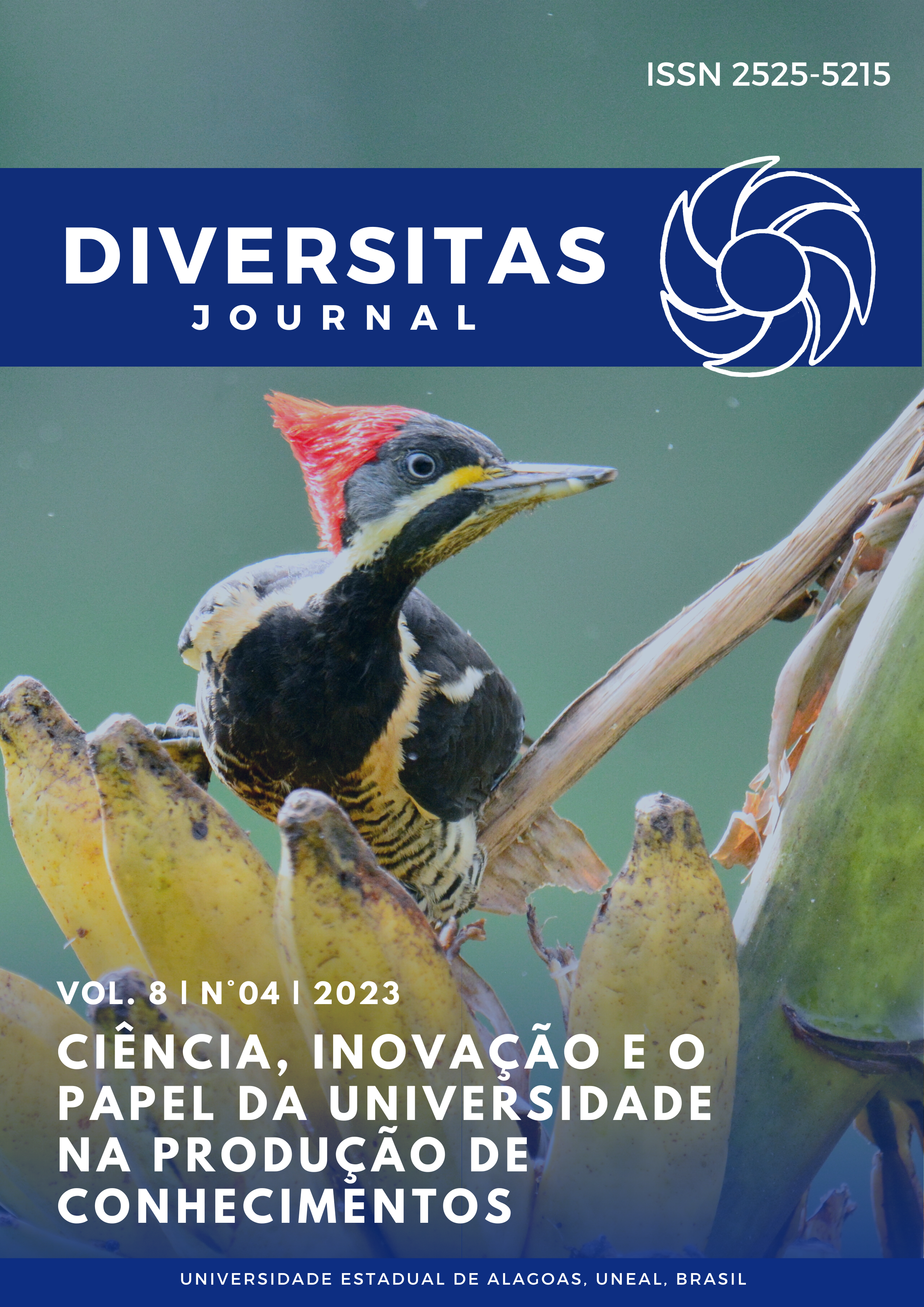Evaluation of the sulfate/chloride ratio in craft beer production and its sensory impacts
DOI:
https://doi.org/10.48017/dj.v8i4.2754Keywords:
Sensory analysis, analysischemical processes, biotechnology acceptability indexAbstract
The craft beer market has stands out in the national and international economic scenario. In this way, the search for news and innovation has increased exponentially, arousing the curiosity of many connoisseurs and specialists in the area. In this context, the present work aims to analyze the sensory influence related to changes in the proportion between sulfate and chloride ions present in the water used to produce artisanal beer. For this purpose, three samples of a German Kölsch style beer were produced, with a neutral profile, with different relationships between these ions. Thus, through sensory analysis tests, the influence of these ions on the final product was verified, in addition to its acceptability index. The result of this analysis showed that there was a considerable difference between the sensory perceptions of malt bitterness and sweetness related to the concentration of the highlighted ionic species, demonstrating that such modifications can contribute satisfactorily to the quality and acceptance rate of the product. However, these correlations must be planned according to the style of beer to be produced.
Metrics
References
Alcantara, M., Freitas-Sá, D. G. C. (2018) Metodologias sensoriais descritivas mais rápidas e versáteis – uma atualidade na ciência sensorial. Brazilian Journal of Food Technology. v (21), p. 1-12.
http://dx.doi.org/10.1590/1981-6723.17916
Araújo, F. B., Silva, P. H. A. & Minim, V. P. R. (2003). Perfil sensorial e composição físico-química de cervejas provenientes de dois segmentos do mercado brasileiro. Ciên-cia e Tecnologia de Alimentos, v(23), p.121-128.
https://doi.org/10.1590/S0101-20612003000200004
Axcell, B. & Torline, P. (1998) Some alternative views on beer flavor. Technical Quarter-ly, v.35, n.2, p.91-94.
Brasil. (2019). Decreto nº 9902, de 08 de julho de 2019. Padronização, classificação, registro, inspeção, produção e fiscalização de bebidas. Diário oficial [da] República Federativa do Brasil: seção 1, Brasília, DF.
https://www.planalto.gov.br/ccivil_03/_Ato2019-2022/2019/Decreto/D9902.htm #art2
Brasil. (2021). Ministério da agricultura, pecuária e abastecimento. Anuário da cerveja: 2021. Biblioteca Nacional da Agricultura – BINAGRI.
http://www.cervbrasil.org.br/novo_site/wp-content/uploads/2022/09/anuario-da-cerveja-2021.pdf>. Acesso em: 29 abr 2023.
Barth, R. (2013). The chemistry of beer: the science in the suds. Hoboken. New Jersey: John Wiley & Sons.
Brunelli, L. T., Mansano, A. R. & Venturini-Filho, W. G. (2014).Caracterização físico-química de cervejas elaboradas com mel. Brazilian Journal of Food Technology, v(17), p.19-27.
http://dx.doi.org/10.1590/bjft.2014.004.
Creswel, J. W. (2007) Projeto de pesquisa: método qualitativo, quantitativo e misto. Artmed.
Dutcosky, S. D. (1996), Análise sensorial de alimentos. DA Champagnat.
Felipe, L. O. & Bicas, J. L. (2017) Terpenos, aromas e a química dos compostos naturais. Química Nova na Escola. v (39). p.120-130.
http://dx.doi.org/10.21577/0104-8899.20160068
Hornink, G. G. & Galembeck, G. (2019). Glossário Cervejeiro: da cultura à ciência. Alfenas. Universidade Federal de Alfenas.
https://educapes.capes.gov.br/bitstream/capes/432604/2/glossario_cervejeiro_2019_tela.pdf.
Meilgaard, M., Civille, G. V. & Carr, B. T. (1987). Sensory evaluation techniques. Florida: CRC.
Minim, V. P. R. (2010). Análise Sensorial: estudo com consumidores. (2ª ed.). UFV.
Oliveira, D. V. & Quaresimin, S. (2021). Análise das características físico-químicas de águas subterrâneas e de abastecimento público de Brusque/SC e entorno: traçando uma relação com as características da água cervejeira como protagonista no processo cervejeiro. Revista Gestão, Sustentabilidade e Negócios , v(9). p. 45-62.
Palmer, J. (2006). How to Brew: Everything You Need To Know To Brew Beer Right The First Time. (1ª ed.). Natl Book Network.
Palmer, J. (2013). Water: a comprehensive guide for brewers. Brewers Publications.
Papazian, C. (2022). Brewers Association Beer Styles Guidelines. Brewers Association. https://www.brewersassociation.org/resources/brewers-association-beer-style-guidelines.
Priest, F. G. & Stewart, G. G. (2006). Handbook of Brewing. (2ª ed.). Crc Press. https://www.taylorfrancis.com/books/edit/10.1201/9781420015171/handbook-brewing-graham-stewart-fergus-priest.
Salimbeni, J. F., Menegueti, M. P. D. & Rolim, T. F. (2016). Caracterização da água e sua influência sensorial para produção de cerveja artesanal. 60 p. Trabalho de conclusão de curso. Universidade São Francisco. Campinas.
https://lyceumonline.usf.edu.br/salavirtual/ documentos/2862.pdf.
Senai. (2014) Tecnologia cervejeira. Centro de Tecnologia SENAI de alimentos e bebidas.
https://pt.scribd.com/document/402539292/Tecnologia-Cervejeira-pdf.
Siqueira, P. B., Bolini, H. M. A. & Macedo, G. A. (2008). O processo de fabricação da cerveja e seus efeitos na presença de polifenóis. Brazilian Journal of Food and Nutrition, v (19), p. 491-498.
https://www.researchgate.net/profile/Helena-Bolini/publication/49599 952_O_PROCESSO_DE_FABRICACAO_DA_CERVEJA_E_SEUS_EFEITOS_NA_
PRESENCA_DE_POLIFENOIS/links/55a3c99608aef8052353f090/O-PROCESSO-
DE-FABRICACAO-DA-CERVEJA-E-SEUS-EFEITOS-NA-PRESENCA-DE-POLIFENOIS.pdf
Souto, M. S. R., Pagorari, L. S. & Solgon, R. D. (2021). Produção artesanal da cerveja Blond Ale com hibisco (Hibiscus Sabdariffa L.), fécula de mandioca e jerivá (Syagrus romanzoffiana). Revista Científica Multidisciplinar Núcleo do Conhecimento. v (2), p.48-65.
https://www.nucleodoconhecimento.com.br/engenharia-quimica/producao-artesanal.
Stone, H. & Sidel, J. L. (2004). Sensory evaluation practices. (2ª ed) Academic Press.
Smith, B. (2023). BeerSmith™: Home Brewing Software, Recipes, Forum, Blog, Podcast and More. https://beersmith.com/.
Strong, G. & Mitchell, D. (2021). BJCP Beer Style Guidelines. BJCP Annual Report. https://www.bjcp.org/bjcp-style-guidelines/.
Tozetto, L. M. (2017). Produção e caracterização de cerveja artesanal adicionada de gengibre (Zingiber officinale). 80 p. Dissertação de mestrado, Universidade Tecnológica Federal do Paraná.
http://repositorio.utfpr.edu.br/jspui/handle/1/2451.
Venturini, G. (2005). Tecnologia de bebidas: matéria prima, processamento, BPF/APPCC, legislação e mercado. Ed. Edgard Blücher.
Downloads
Published
How to Cite
Issue
Section
License
Copyright (c) 2023 Jose Milton Ferreira Junior, Cleonilda Claita Carneiro Pinto, Izabely Cristina Teixeira Maia, Bruna machado Ferreira

This work is licensed under a Creative Commons Attribution 4.0 International License.
The Diversitas Journal expresses that the articles are the sole responsibility of the Authors, who are familiar with Brazilian and international legislation.
Articles are peer-reviewed and care should be taken to warn of the possible incidence of plagiarism. However, plagiarism is an indisputable action by the authors.
The violation of copyright is a crime, provided for in article 184 of the Brazilian Penal Code: “Art. 184 Violating copyright and related rights: Penalty - detention, from 3 (three) months to 1 (one) year, or fine. § 1 If the violation consists of total or partial reproduction, for the purpose of direct or indirect profit, by any means or process, of intellectual work, interpretation, performance or phonogram, without the express authorization of the author, the performer, the producer , as the case may be, or whoever represents them: Penalty - imprisonment, from 2 (two) to 4 (four) years, and a fine. ”


















